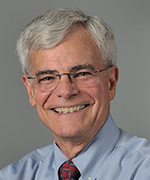From the Deputy Director for Intramural Research
Of Assays and Surveys: Tools to Inform Decision-Making

For basic scientists and clinicians, reproducible, accurate, and sensitive assays are the gold standard for evaluating homogenous populations of molecules. For social scientists and administrative decision-makers, surveys are the gold standard for evaluating information from heterogeneous populations of people. Assays can yield accurate data based on a relatively small sample of homogeneous molecules. Surveys, however, can only yield useful data if they are based on larger samples of heterogeneous populations.
Biostatisticians tell us that a 10 percent truly random sample is a good representation of the response of an entire large population. The problem is that it is very difficult to achieve random samples in all substrata of a large population. So we must rely on a high response rate in order to obtain meaningful information to inform decision-making.
This argument is not purely theoretical. At the NIH we make decisions at all levels that profoundly affect the organization’s mission and the conduct of science here. We need to have input from all our NIH workforce to make informed decisions. One of the ways to obtain such input is through surveys. But all too often, staff either ignore the surveys we send or cannot find time to respond to them. I will promise to limit the number of surveys that we send broadly to NIH staff if you promise to respond to the best of your ability to those surveys we do send out.
Let me illustrate the importance of this request with a few examples:
- Each year the federal government asks you to fill out the Federal Employees Viewpoint Survey (FEVS). The survey results help us determine whether work conditions at the NIH match your expectations and, more specifically, identifies areas in need of remediation. For example, several years ago, the FEVS results emphasized the need for programs that increase work-life balance (such as flexible work hours and telework). In consequence, NIH now has a very robust program in these areas.
- The NIH is assembling an important survey on workplace climate and harassment, including sexual harassment. You will receive it later this winter or early spring. The results will have a profound impact on the programs we develop to ameliorate unacceptable situations. Please participate fully.
- Recently, the Assembly of Scientists sent out a survey asking its constituents to comment on the relative importance of many of the challenges faced by scientists at the NIH. The responses will be used to limit, insofar as possible, some of the administration burdens faced by our scientific and clinical investigators.
- Under the direction of the Women Scientists Advisors, a survey was created to assess the experiences of our postdoctoral fellows. The fellows will fill out the survey when they check out through the Foundation for Advanced Education in the Sciences (FAES). The results will help us understand the factors affecting career decisions by our fellows.
I am well aware that some of the surveys are complex and lengthy (in some cases this approach is needed to verify the statistical accuracy of the responses), but we cannot get an overall view of your circumstances unless everyone is willing to take some time to complete the surveys. The result will be more informed decision-making and more effective NIH management.
As always, your comments will be appreciated.
This page was last updated on Friday, April 8, 2022
